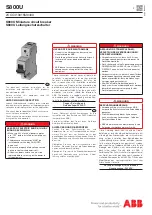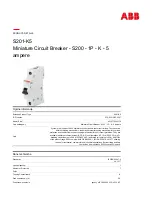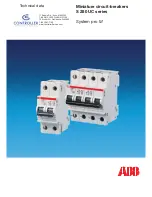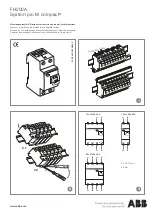
23
IZM63 / IN63 low voltage air circuit breaker
MN013014EN May 2021 www.eaton.com.cn
Section 3: Circuit breaker description and operation
Secondary terminal
AMP secondary
wiring removal tool
Drawout type circuit breakers:
Compatible secondary plug-in connectors are mounted on
the top front portion of the drawout cassette (Figure 3-11).
These connectors match and plug into the circuit breaker
mounted connectors. Contact points are wired from the
cassette’s plug-in connectors to cassette mounted terminal
blocks. The terminal blocks are also mounted on the top
front portion of the cassette. The secondary terminals have
finger-proof hinged covers with small holes for probe testing.
Fixed type circuit breakers:
There are two secondary connection options:
(1) Without terminal block
(2) With terminal block
1. Without terminal block—If a terminal block for customer
use is not required, the circuit breaker is supplied with
both plug-in connectors (male and female) just described
in the two previous paragraphs. The plug-in connectors
are joined and attached to the top portion of the circuit
breaker. The customer can plug secondary wiring with
crimp-on connectors into the back of the plug-in connec-
tors; subsequently the connections to the circuit breaker
can be quickly joined or separated as required.
2. With terminal block—For those customers preferring
to wire to a terminal block, terminal blocks with fin-
ger-proof hinged covers are added to the secondary
configuration just described for a fixed circuit breaker
“without a terminal block.” The terminal blocks are wired
to the plug-in connectors and also permanently attached
to the upper rear portion of the circuit breaker.
A standard tool is available from the plug-in connector man-
ufacturer (AMP) to facilitate the removal of secondary wiring
from a plug-in connector, or contact Eaton for assistance
(Figure 3-12). The connector halves must be separated to
use this tool.
Figure 3-11 Cassette-mounted secondary wiring
Figure 3-12 AMP secondary wiring removal tool
















































